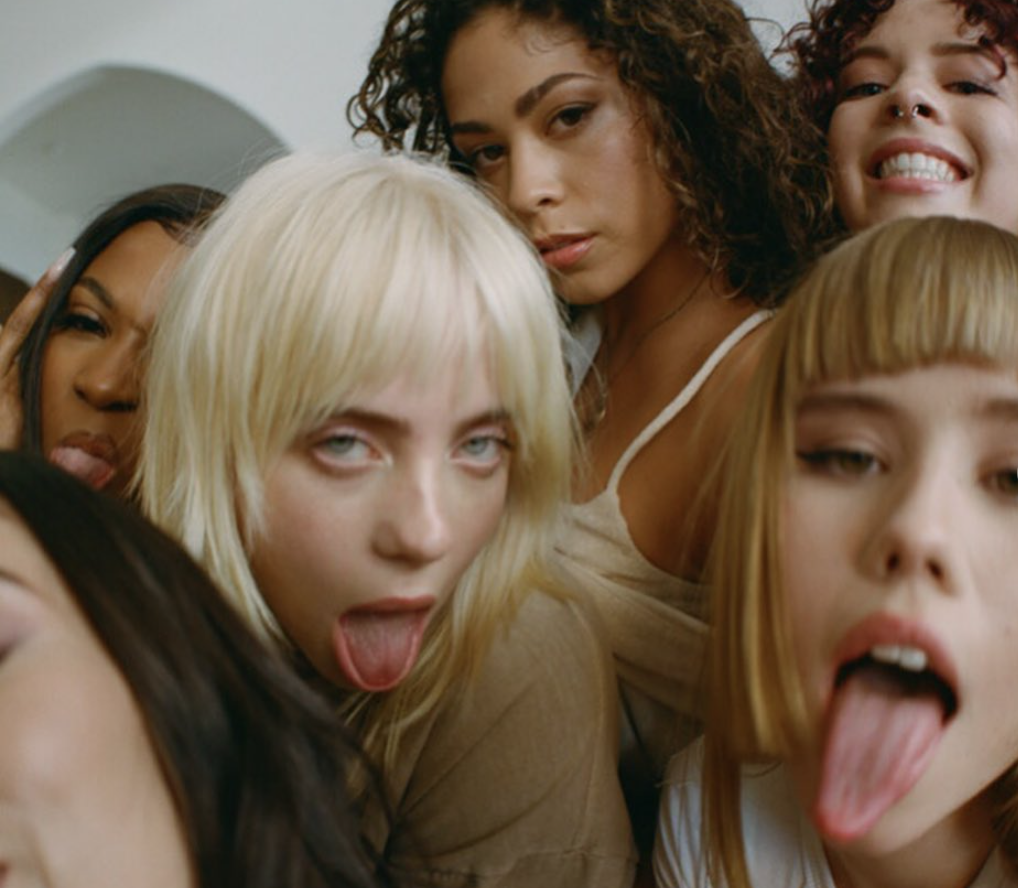Billie Eilish is one of the most famous people in the world.
The “Bad Guy” singer racked up a record-breaking number of Grammy Awards for her debut studio album, graced dozens of magazine covers and has already recorded a James Bond anthem. The 19-year-old has had a huge spotlight glaring on her since her debut EP in 2017—everything from her hair colour to her music to her dating life is sharply scrutinized.
And now she’s drawing ire from fans for alleged queerbaiting in a new music video and subsequent social media post saying she “loves girls.”
But a lot of the blowback fails to take into account sexual fluidity, young folks experimenting and the intense spotlight we cast on teenage celebrities.
What is queerbaiting, why is everyone up in arms about it and what does Billie Eilish’s Instagram post mean for it all? Here’s what you need to know.
What did Billie Eilish do?
Earlier this month, the singer released the music video for her new song “Lost Cause,” which she directed herself. It features Eilish and other teen girls in a sleepover setting where they’re depicted dancing, cuddling and doing other sleepover things (there’s also a closet, which some fans argue is a nod to coming out).
Fans quickly started to call out the video for “queerbaiting” and exploiting woman-loving-woman imagery.
What actually is queerbaiting?
If you want the technical and very legit Urban Dictionary definition, queerbaiting is “When an author/director/etc. gives hints and clever twists to paint a character as possibly being queer to satisfy queer audiences, but never outright says they are so they can keep their heterosexual audience.”
Basically, it’s hinting at queer themes and leading on queer audiences, without actually doing the work to make things explicit or legitimately queer. Queerbaiting usually refers to fictional media, like books or TV. Think of Buffy and Faith from Buffy the Vampire Slayer: the pair were written in a way that attracted queer fans (like myself), but it never paid off as meaningful queer representation. A more recent example are Steve Rogers and Bucky Barnes in the Marvel movies and the piles of horny fanfiction written about them by fans wanting the subtext to become text.
So wait, is Billie Eilish actually queerbaiting?
Many social media users were quick to call out Eilish’s depiction of young women having a slumber party—despite Eilish herself not publicly identifying as queer—as queerbaiting.
But let’s be real here: Supernatural showrunners suggesting “there may be something there” between two male characters for literal years before ending their show by finally acknowledging the relationship but sending one of them to literal super hell—that’s queerbaiting. Noted transphobe J.K. Rowling backpeddling to make Dumbledore gay, but not talking about it in the Harry Potter books—that’s queerbaiting.
A teenager publicly exploring her sexuality through art—or simply just expressing that girls are neat—is not necessarily queerbaiting.
To quote fellow pop star Ariana Grande: Why are we so obsessed with her?
Honestly, there’s a lot to unpack here.
People like labels, and we seek to understand people through labels. If Eilish was openly queer, her statement and video likely would’ve been received a lot differently. But she’s not, and so people want to ask questions.
When we’re teenagers, we’re all figuring stuff out. When I was 19, I thought I was 100 percent straight and went on a date with a straight cisgender guy named Billy from Tinder who thought four episodes of Friends was foreplay. Nearly a decade later, I’m literally so queer it’s my job. It took some time to get there though, and for most of us, that messy exploration doesn’t happen under the kind of public gaze cast on Eilish.
Celebrity queer journeys are rarely clear and linear, either privately or publically. For every JoJo Siwa—whose family-friendly coming out and self-labelling as gay earlier this year was as PG and straightforward as it gets—there is a Miley Cyrus, messily getting photographed making out with Cara Delevingne. It took Demi Lovato years (and their own accusations of queerbaiting with the song “Cool for the Summer”) to come out publicly as not only pansexual, but non-binary, too.
We don’t always know the right label to use to describe ourselves, let alone when we’re teenagers. I don’t purport to know how Eilish identifies, or how she’ll identify in five years or 10. Maybe Eilish is queer. Maybe she’s not. She has plenty of time to figure that out—literally a lifetime.
Other artists who’ve been accused of queerbaiting, such as Rita Ora and Katy Perry (who can forget “I Kissed a Girl”?), have since come out to confirm or clarify their own sexual or romantic attraction to women to defend their depictions. Now, fans are pressuring Eilish to do the same.
Many people are pointing to the existence of Eilish’s romantic interest, Matthew Tyler Vorce, as proof of her alleged queerbaiting. Putting aside Vorce’s incredibly problematic past of homophobic, racist and mosgynistic comments (which neither the 29-year-old actor or Eilish have acknowledged), that argument also fails to account for the fact that people can be bisexual or pansexual or a host of other ways of being that involve liking a straight cis guy and also loving girls.
More young people than ever before are identifying as sexually or gender fluid, and that’s a good thing. Normalizing a world where teen celebrities are comfortable depicting female intimacy or exploring their sexuality without labels can only be a good thing for everyone.
Where it becomes a problem—and the reason Perry was criticized for her 2008 cherry-chapstick bop—is when straight-presenting artists engage in sexualizing queer love without doing the work or acknowledging the broader community. Taylor Swift’s been accused of queerbaiting but has talked openly about it and worked to better engage with the LGBTQ2S+ community. She even gave us a quietly gender-ambiguous love triangle bop in “betty” last year that was embraced by queer women and straight folks alike.
In a piece on Swift for Vulture, writer Madison Malone Kircher argued the difference between queerbaiting and allyship.
“Queerbaiting is creating art specifically for queer people, art that targets us for our clicks, our views and our dollars. Allyship is creating art where we’re just naturally part of the narrative,” she wrote.
Kircher argues that “betty” does exactly that by presenting a narrative queer people feel honestly reflects them (who among us hasn’t pined).
While the “Lost Cause” video is hardly the representative narrative queer folks might be clamouring for, there isn’t really evidence that Eilish is trying to exploit the queer community to make a buck. It’s a video of some girls at a sleepover, and an Instagram caption that, frankly, we can all agree with. It’s Eilish playing around as a young artist, maybe exploring her sexuality, maybe being platonically intimate or maybe none of the above.
Let Billie Eilish do what she wants. She’s a teenager who says she likes girls. She doesn’t owe us any more explanation.


 Why you can trust Xtra
Why you can trust Xtra


